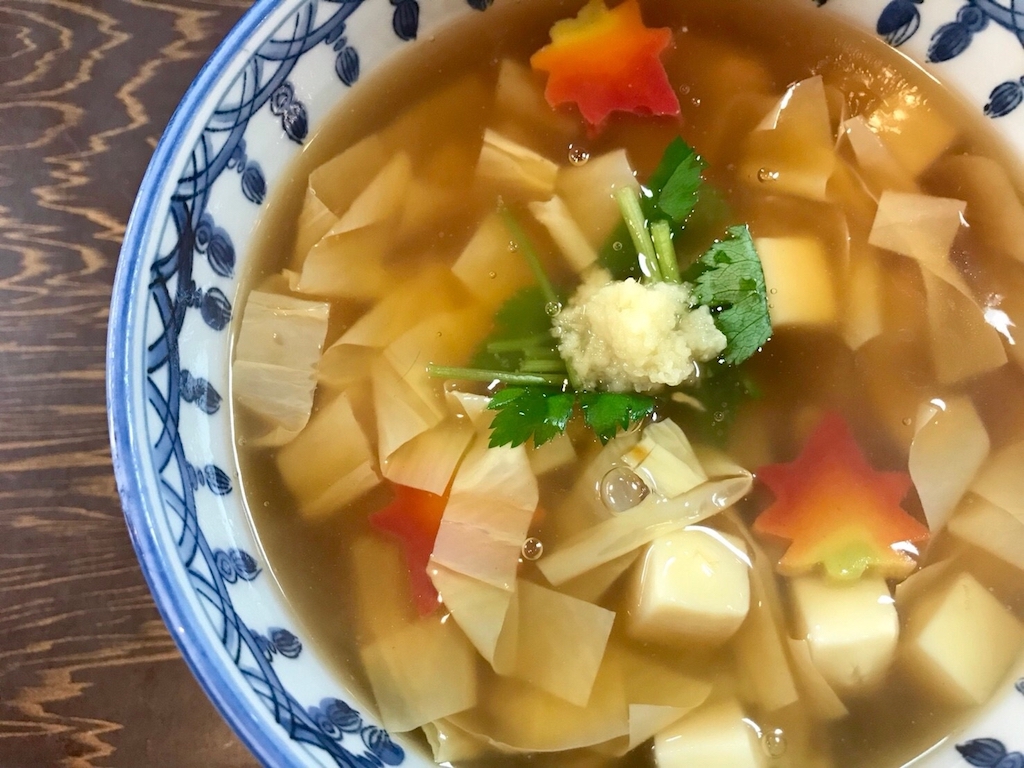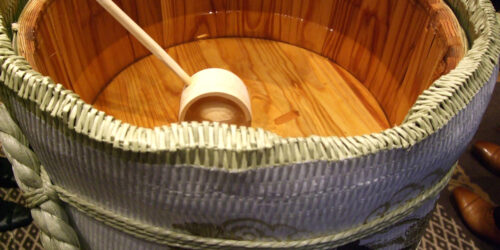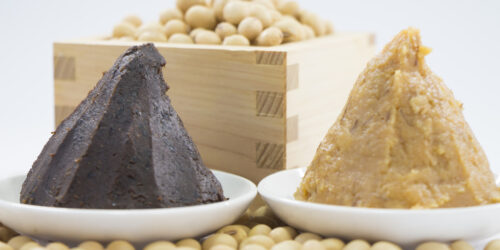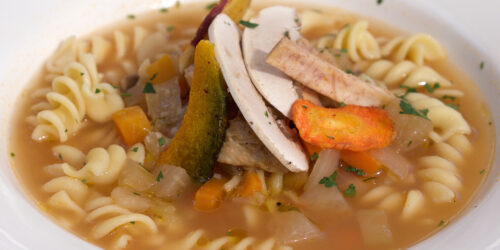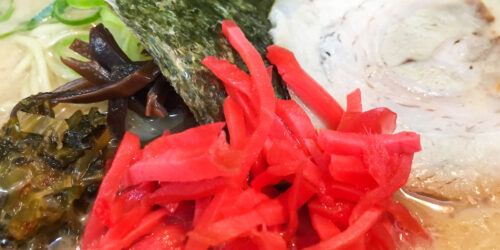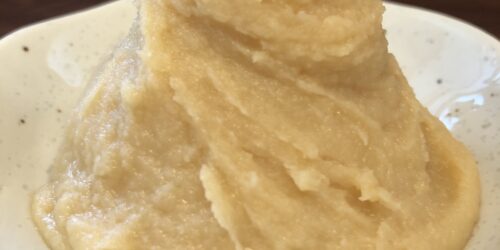What Is Yuba (Tofu Skin) and How Is It Used?
What Is Yuba ゆば (Tofu Skin)?
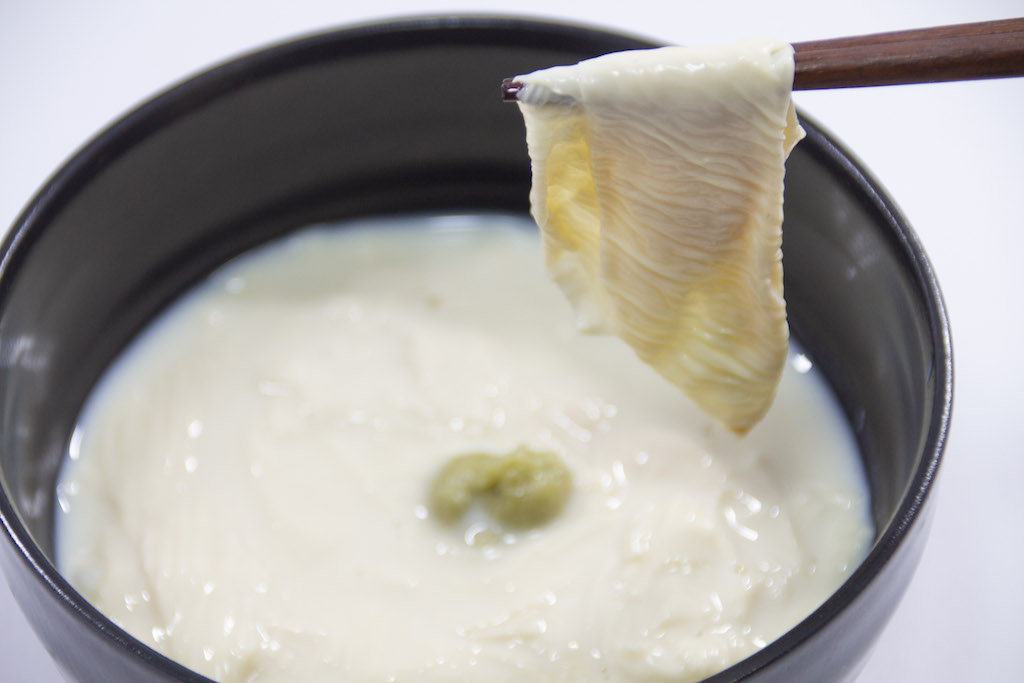
Yuba is one of the processed soybean foods. It’s a thin skin formed on the surface of soy milk when heated.
It’s said that Japanese yuba is introduced from China about 1200 years ago.
Usually yuba can be eaten raw as sashimi, or also used as an ingredient in cooking.
Kyoto and Nikkou (in Tochigi prefecture) are famous places for yuba in Japan. (They have both sashimi and yuba dishes).
There are 2 types kanji characters for yuba in Japanese: 湯葉 (It’s used in around Kyoto area), 湯波 (It’s used in Nikkou area)
How Is Yuba Made?
When soy milk is heated, you can see a film formed on the liquid surface. (It’s called Ramsden phenomenon.) Yuba is made by lifting up this film with a bamboo skewer.
Soy milk is, by the way, a white liquid produced when boiling and squeezing crushed soybeans in the process of making tofu.
What’s the Difference Between Yuba and Tofu?
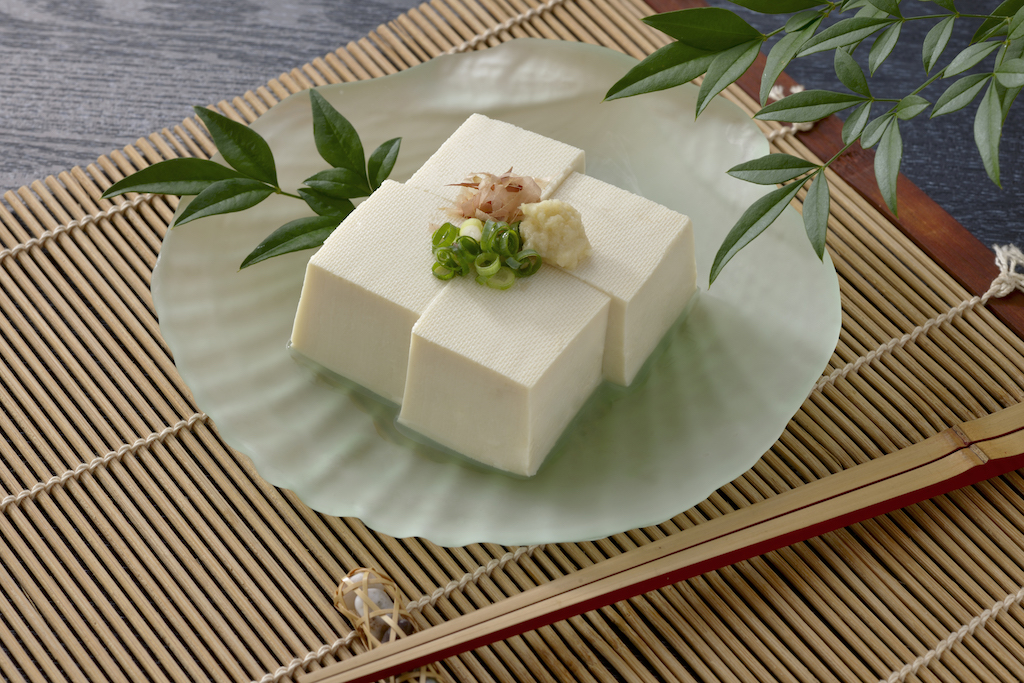
Tofu: Using coagulant such as bittern in order to coagulate vegetable proteins contained in soybeans.
Yuba: Doesn’t use coagulant, but vegetable proteins contained in soybeans are coagulated by heating. The amount of yuba that can be produced from soybeans are about 1/10 of tofu because it doesn’t use coagulant.
What Does Yuba Taste Like?
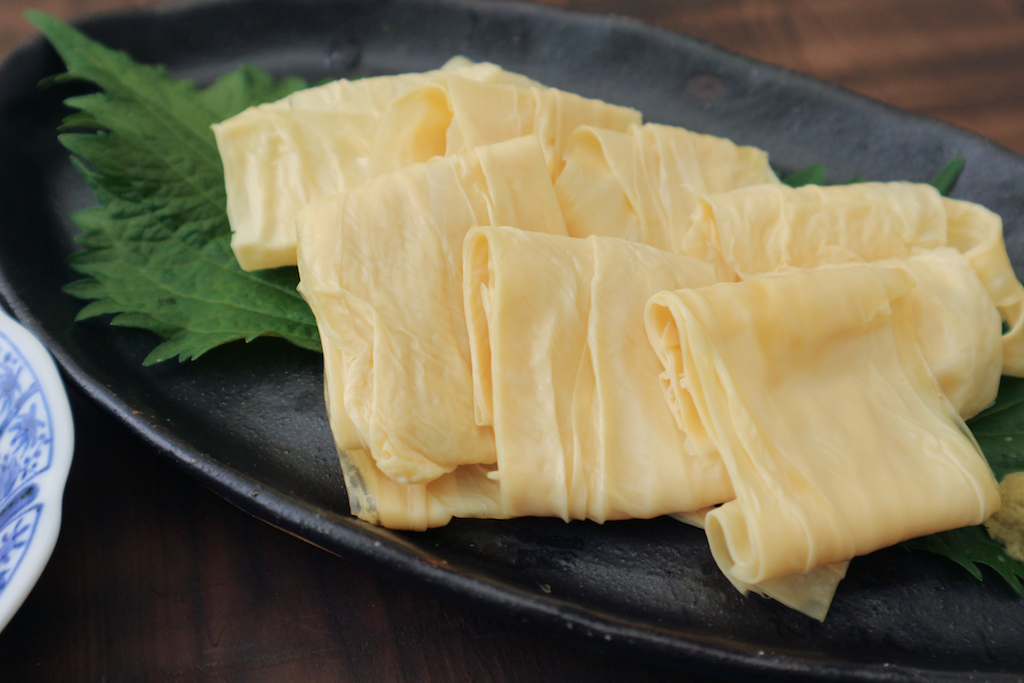
The raw yuba (sashimi) has very soft and smooth texture especially if it’s served with soy milk. And it has a little bit of chewy texture too.
The taste of yuba is kind of like soy milk, but basically it’s light and simple. So if you eat it as sashimi, putting a little soy sauce and wasabi is highly recommended.
The dried yuba is usually soaked in warm water to make it tender first, and will be tasty if it’s in soup dishes.
Different Types of Yuba and How They Are Used
Yuba is roughly categorized into 2 types: Raw yuba and Dried yuba.
Raw Yuba 生ゆば
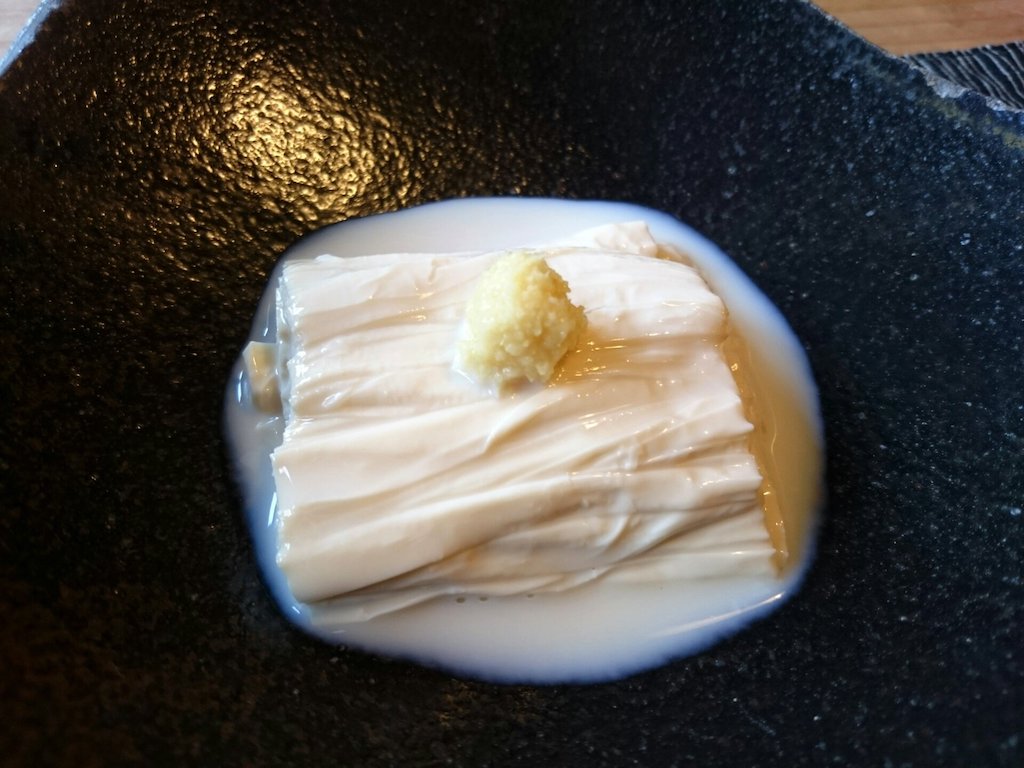
Raw yuba is made by lifting up the film formed on the surface of boiled soy milk. The texture will be a very thin sheet. This sheet is fold and cut, then served as yuba sashimi. Sometimes the sashimi is soaked in soy milk and served with it like the picture below.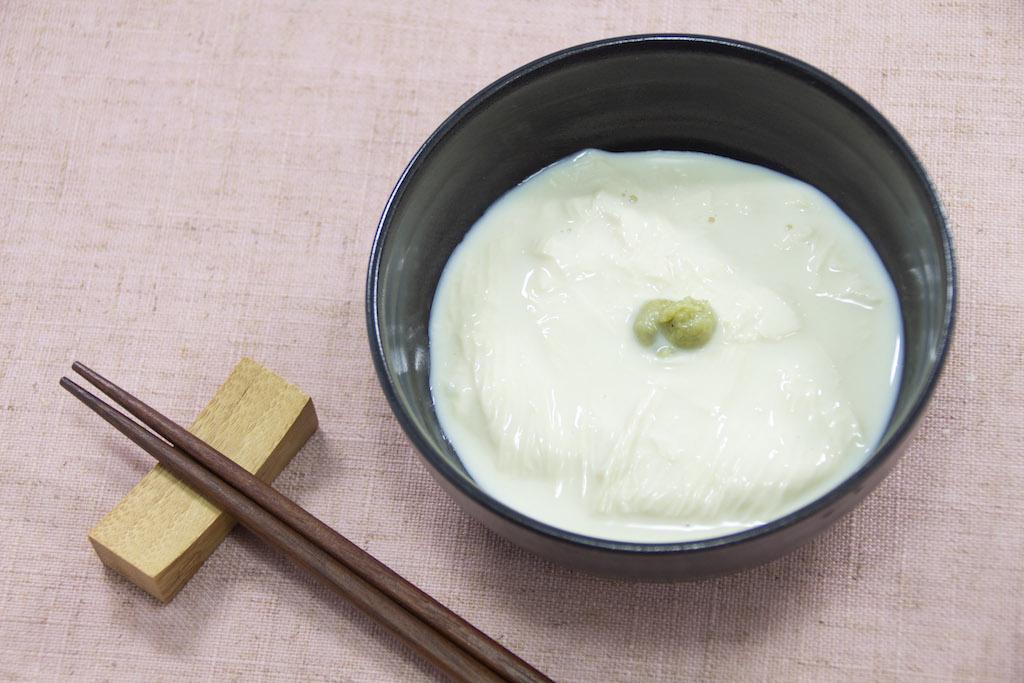
Normally, yuba sashimi is eaten with soy sauce and wasabi just like the fish sashimi (raw sliced fish).
Dried Yuba (Fully dried 乾燥ゆば/ Semidried 半乾燥ゆば)
Dried yuba is used in various dishes, for example, soups, stews, one-pot dishes, and toppings for noodle dishes.
There are various types of dried yuba, so let me introduce some of them below.
Flat Yuba (平ゆば Hira-Yuba)
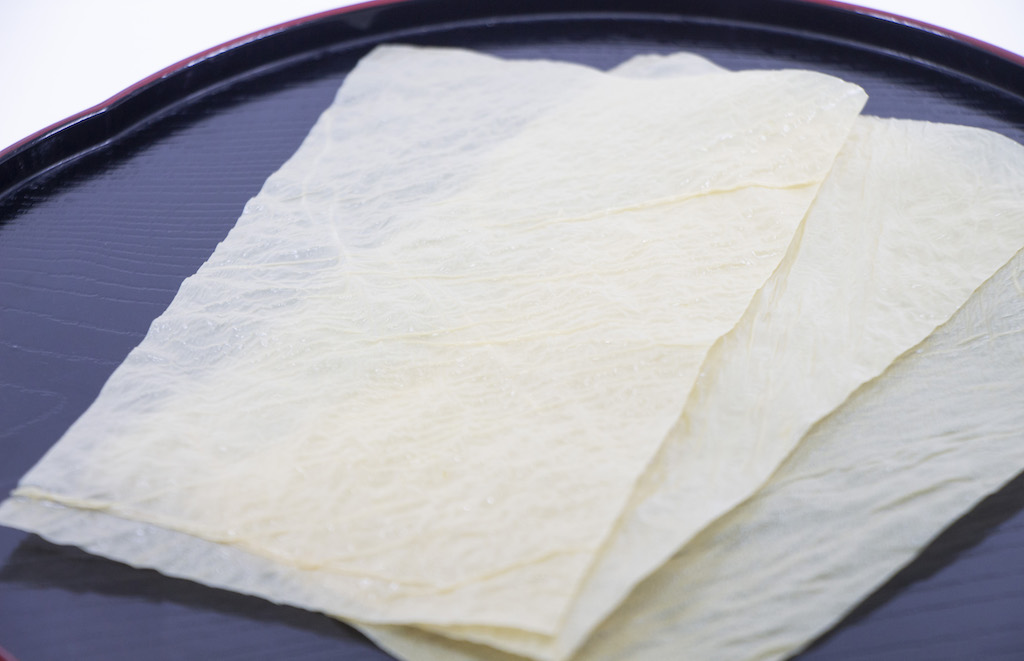
As I mentioned above, there is a sheet made by lifting up the film formed on the surface of boiled soy milk. Flat-yuba is made by drying or semidrying the sheet. When you use it for the cooking, soak it in warm water, cut it into bite-sized, and add it into various kinds of dishes.
Yuba Rolls (巻ゆば Maki-Yuba)
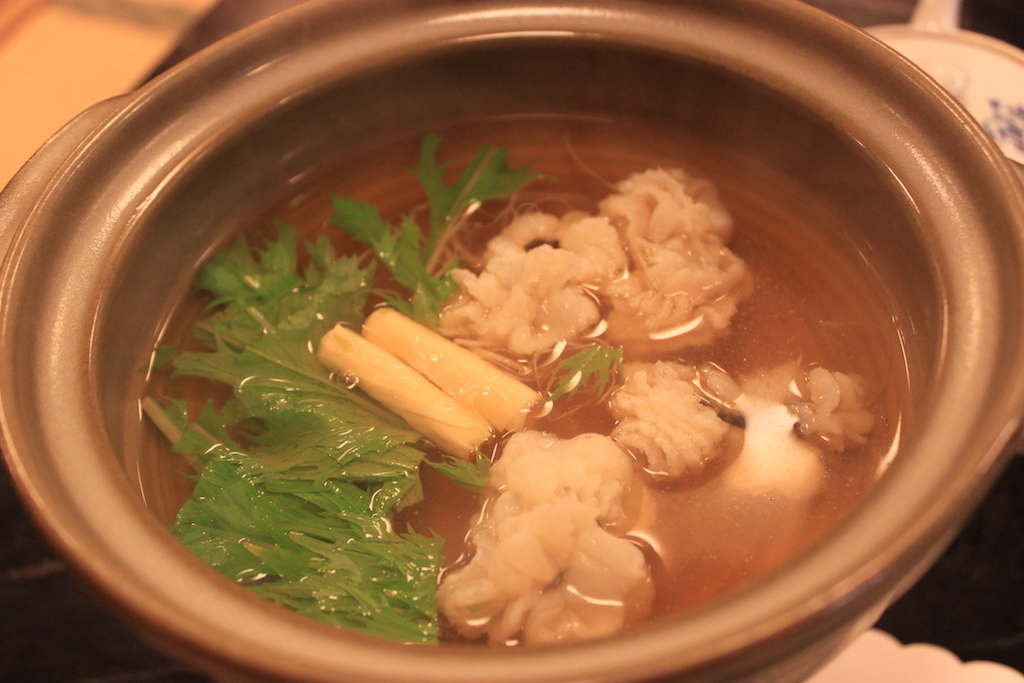 ▲Yuba Rolls in Hamo-Nabe
▲Yuba Rolls in Hamo-Nabe
Yuba rolls are made by rolling up the semidried yuba. It’s generally used in the clear soup and one-pot dishes (nabe dishes).
Deep-Fried Yuba Rolls (揚巻ゆば Agemaki-Yuba)
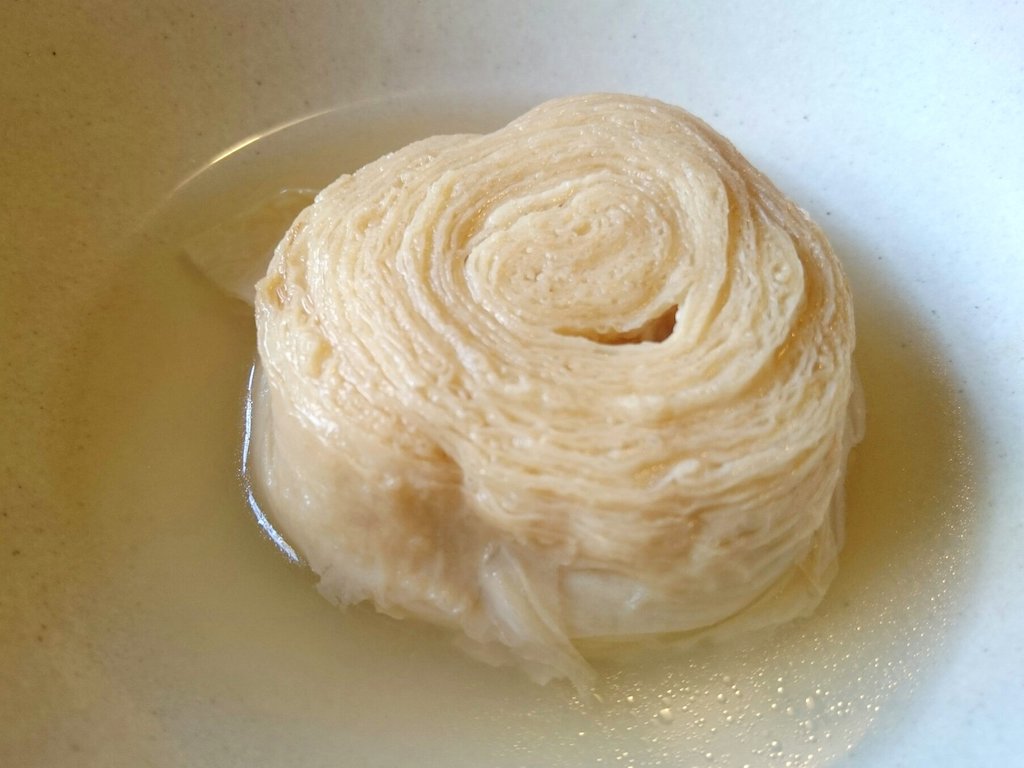
As the name suggests, it’s made by deep-frying yuba rolls. Yuba is compatible with oil, and deep-fried yuba tastes nice and juicy. When you use it for the cooking, you should parboil it first, then simmer it with favorite vegetables or other ingredients.
Toji-Yuba (東寺ゆば Toji-Yuba)
Toji-yuba refers to the yuba wrap made by wrapping fish, shrimp, and vegetables with yuba (ingredients are totally depends on manufacturer). The yuba wrap usually deep-fried or simmered with soy sauce based soup.
How Do You Eat Yuba?
The followings are popular yuba dishes in Japan.
Yuba Sashimi (Raw Yuba)
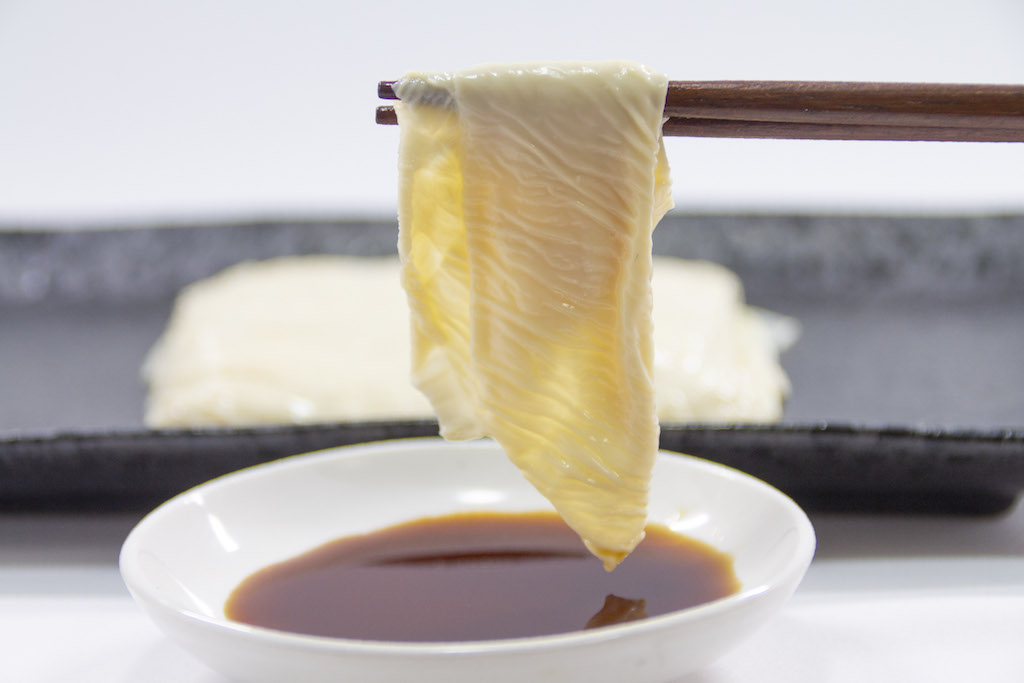
Yuba sashimi is one of the most popular way for enjoying yuba. It gives you wonderful scent of raw yuba, and matches so well with soy sauce and wasabi.
Simmered Yuba
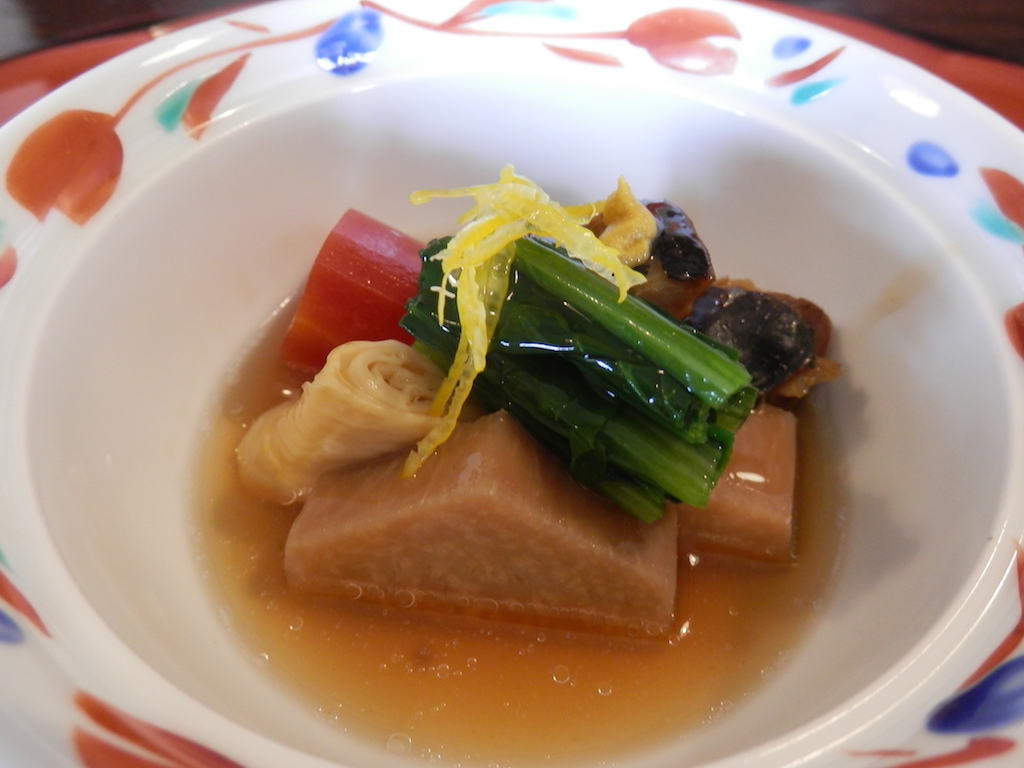
Ingredients in simmered dishes can be anything in Japan, and yuba is one of the elegant material that you can’t use for daily use. The seasoning depends on your favor, but soy sauce based simple soup is perfect match with yuba.
Toppings for Noodle Dishes
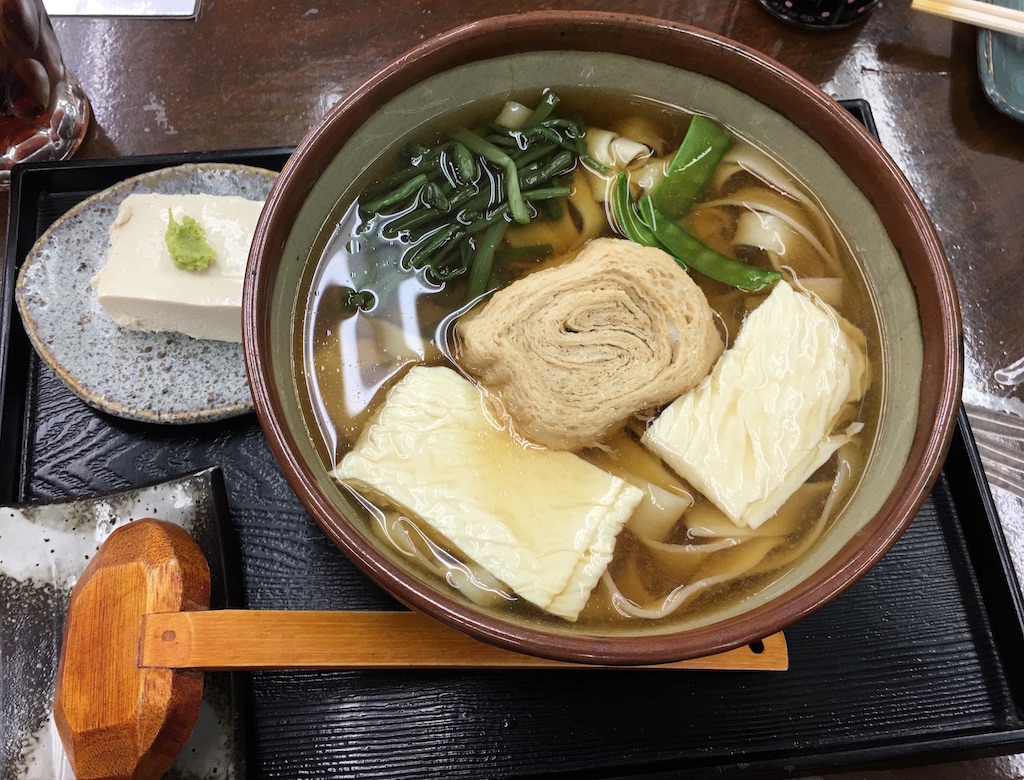 ▲Udon Noodles Topped with Yuba
▲Udon Noodles Topped with Yuba
Well simmered dried yuba such as yuba rolls are used as toppings for ramen, soba noodles, udon noodles, etc.
Yuba Bowl
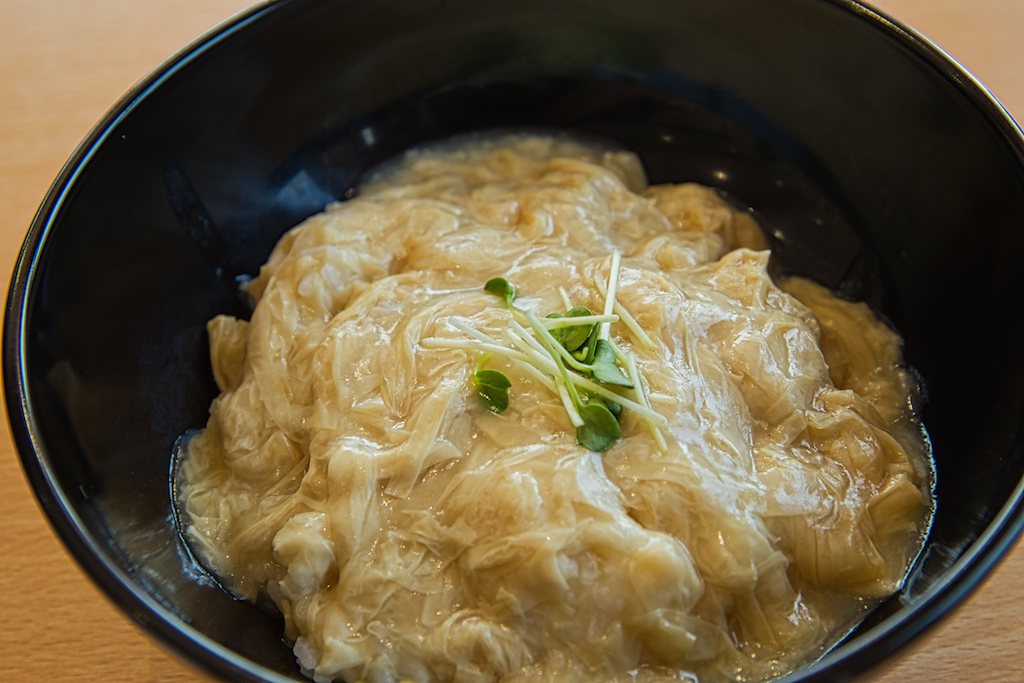
Just like beef bowl, yuba can be the main ingredient for bowl dishes. Both raw yuba and dried yuba can be used for it. Seasoning of the yuba bowl is usually simple, soy sauce based sauce with dashi (stock).
Ingredients for Oden (Fishcake and Vegetable Stew)
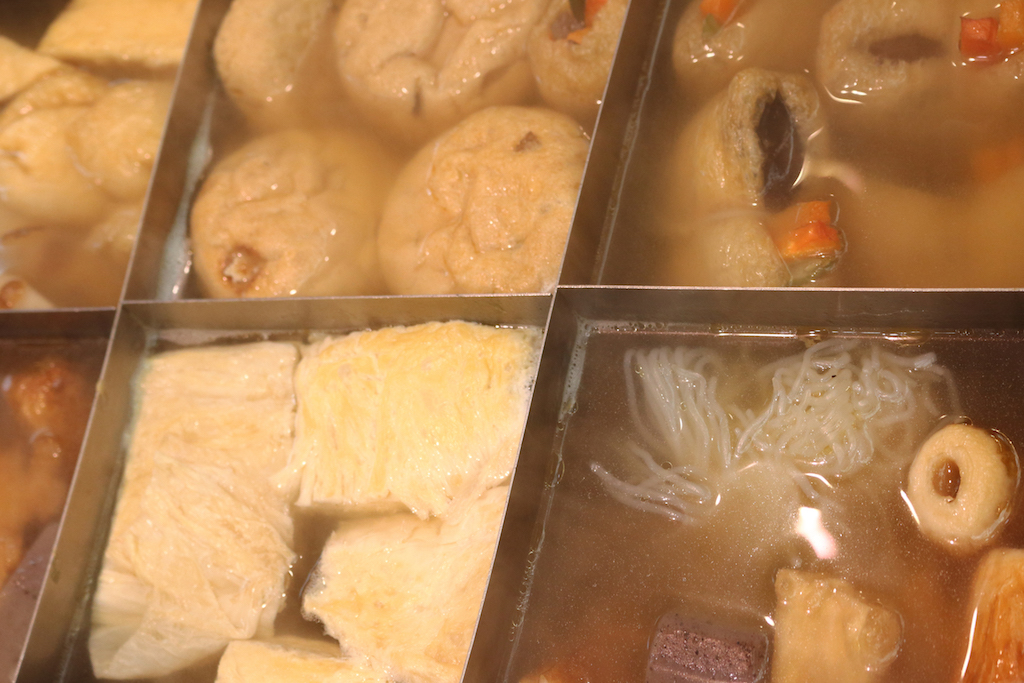
Although fishcakes are the main ingredients for oden, yuba is also great ingredient for it. Yuba can soak the soup of oden so well, so tastes amazing.
Yuba Sushi
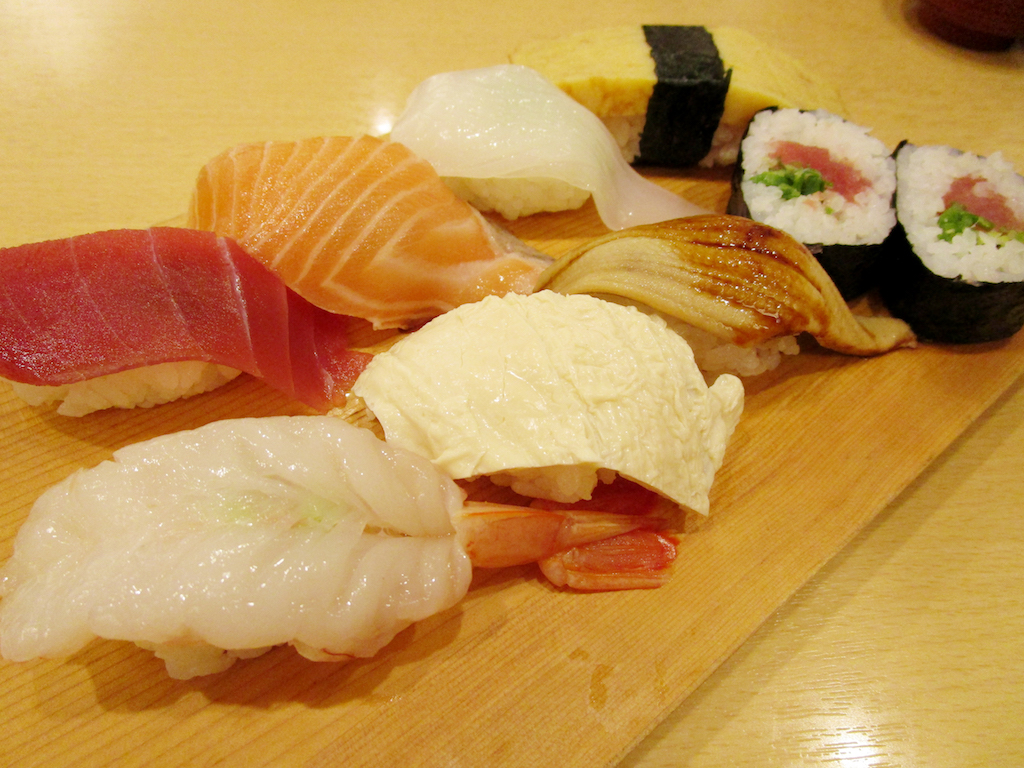
Yuba can be used as sushi topping. As you know, since yuba can be eaten as sashimi just like raw fish, sushi is also great way to enjoy raw yuba.
Nutrition of Yuba (Dried)
Below you will find the nutrition information for a 3.5 oz (100g) of dried yuba:
・Calories: 530kcal*
・Water: 6.9g
・Total Carbohydrates: 7.2g
└Dietary Fiber: 3.0g
・Total Fat: 32.1g
・Protein: 50.4g
・Minerals
└Sodium: 12mg
└Potassium: 840mg
└Calcium: 210mg
└Magnesium: 220mg
└Phosphorus: 600mg
└Other Minerals: 16.5mg (iron, zinc, etc)
・Vitamins
└Niacin: 1.4mg
└Vitamin E: 2.4mg
└Other Vitamins: 1.4mg
*The calories are high because it’s “dried” one. The calories of raw yuba (3.5 oz) is 231kcal, and there is not big difference in nutrients considering the amount used per meal.
What Are the Benefits of Eating Yuba?
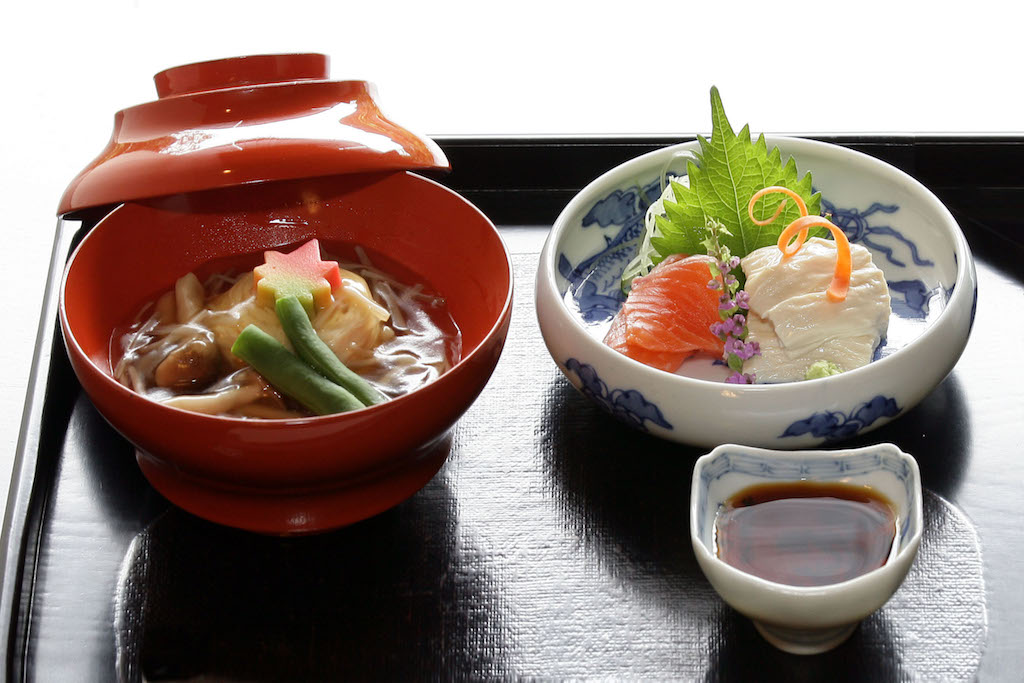
The great thing about eating yuba is that yuba contains abundant proteins, yet low in carbohydrates.
Also, yuba has plenty soy isoflavones. Soy isoflavones is the component which is similar to Estrogen, a female hormone. It’s said that Estrogen works to suppress the action of osteoclasts that break bones.
Compared to the nutrients contained in tofu, the one of yuba is remarkable. The raw yuba contains much more minerals, vitamins, and amino acid rather than tofu.
What Can I Do with Yuba Sheets?
Raw Yuba Sheets
You can cut the raw yuba sheets, and eat it as it is without cooking. Or you can also put it in one-pot dishes.
Recommended recipe using yuba sheet is making fresh spring rolls with it. Just like the picture below, you can wrap whatever you like such as meat, fish, and seasonal vegetables.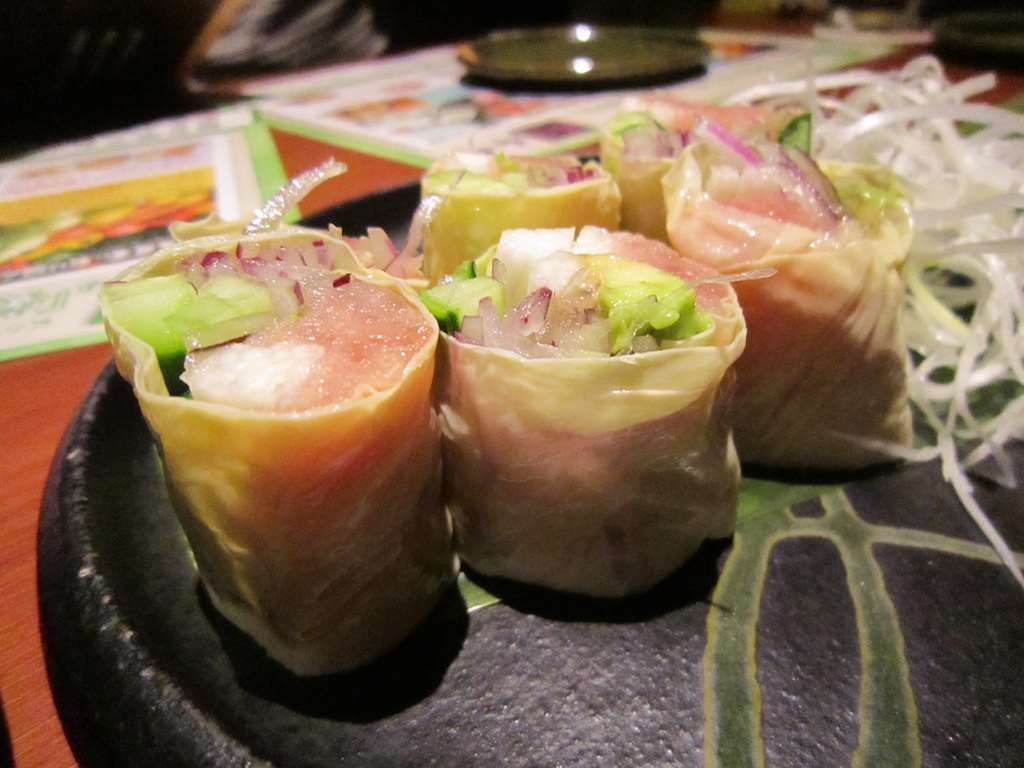 ▲Fresh Spring Rolls with Yuba
▲Fresh Spring Rolls with Yuba
If you deep-fry yuba sheet, it will be amazing crispy toppings for salad too.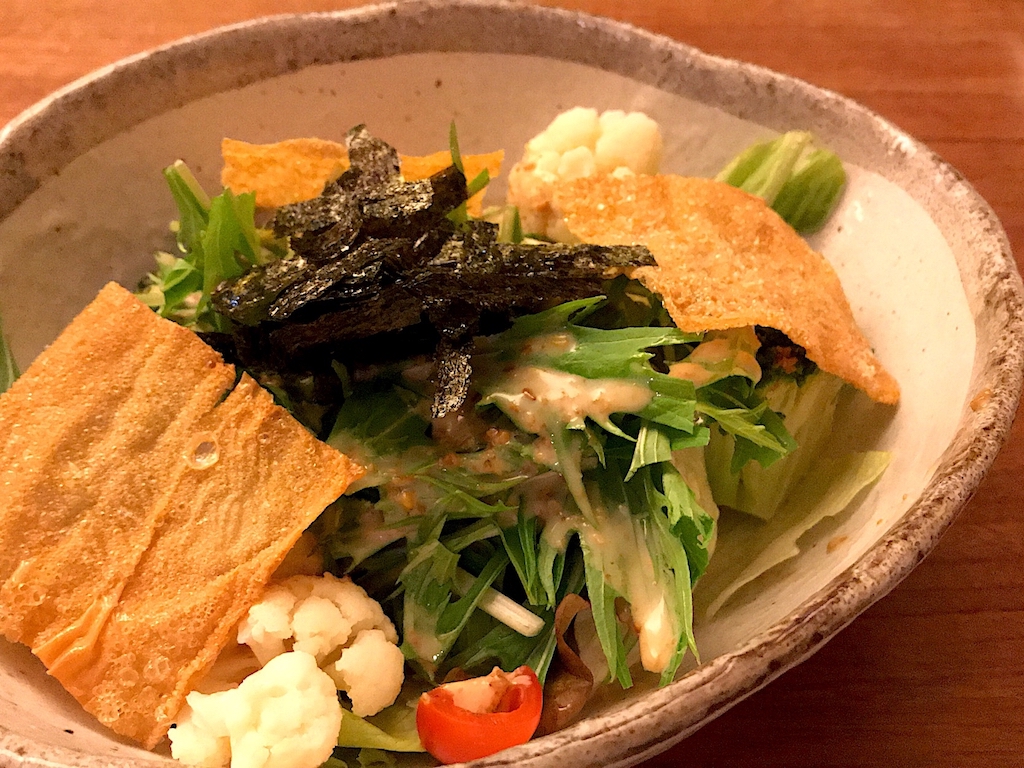 ▲Salad Topped with Deep-Fried Yuba Sheet
▲Salad Topped with Deep-Fried Yuba Sheet
Dried Yuba Sheets
It’s generally said that dried yuba sheets should be soaked in not boiled water but in warm water or water until tender otherwise it could lose the great flavor of soybeans in boiled water.
When you want to make fragile flat yuba tender, wrap it with thick paper towel first, then put it in a container, and pour warm water gently. After 10 minutes, dried flat yuba will be tender evenly without losing its shape.
Can You Freeze Yuba?
Yes, you can freeze raw yuba.
Frozen yuba might lose some of its flavor and aroma, so if you could get fresh raw yuba, I would recommend you to eat them all within few days (3-4 days). You should enjoy the fresh flavor of soybeans and its soft texture.
It will keep about a month if you freeze it. There are some frozen yuba on the market. So if you can find them, it’s probably better. (You don’t need to hurry to finish them.)
The method for defrosting frozen yuba is that you should transfer it from the freezer to the refrigerator, and wait for half day or a day. Defrosted yuba should be used for cooking, for example, soup dishes, stews, and one-pot dishes.
